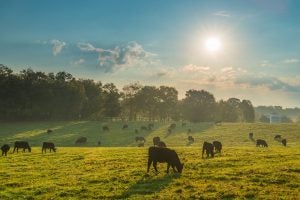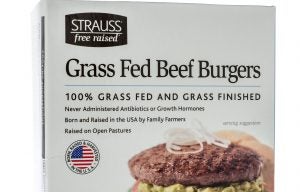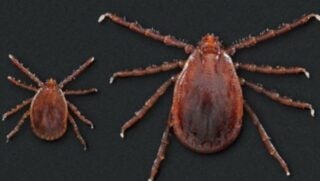Food labels can do a great job conjuring up “feel good” images of your food. And who doesn’t love the idea and scenic photos of cattle on pasture? As they dot my local farm horizon, it warms my heart to see them everyday.
Sometimes however, food labels are not always as they seem. Did you know that there really isn’t much federal oversight for the label, “grass fed” beef? In 2016, the Agricultural Marketing Service revoked the grass-fed label. In the Federal Register notice, the AMS states that having a strong, clear, consumer-friendly labeling standard “does not facilitate the marketing of agricultural products in a manner that is useful to stakeholders or consumers” because a different USDA agency, the Food Safety Inspection Service (FSIS), must approve meat labels and “there is no guarantee that an USDA-verified production/marketing claim will be approved by FSIS.”
It can be confusing, but a lot of food labels are.
You see, technically all cattle are “grass fed,” but it’s how they’re finished that makes the difference. When cows have calves, those animals are always raised on pasture, usually on the massive ranches across the country. The term “cow” technically means a female bovine that has had a calf (“cattle” is the proper term when discussing a group of bovines), and you wouldn’t want cows to get “fattened up” since they’re pregnant. Hence they’re raised on mainly grass and not grains, which could cause weight gain for them.
So, when cows have calves and those calves begin to grow, they all eat grasses. When calves are at the age of weaning, they can either be grass-finished or grain-finished. Most of the cattle in the U.S. are grain-finished, as it requires a lot fewer resources and time to feed them to market weight. On the flip side, grass finishing can do a great job restoring carbon in the soil. Regardless of system, it’s important to note that only 2 percent of U.S. greenhouse gasses can be linked to cattle.
Still, even when cattle are grain finished, they’d almost always still have access to grasses like hay, hence “grass fed.” Technically, they’re still fed grass … even though they also eat corn or other grains! To make things even more complicated, botanically speaking, corn is a type of grass.

So what do you do if you want fully grass-fed and grass-finished beef? Your best bet is to buy local, direct from the farm itself so that way you know exactly what you’re getting. There’s also some third-party verified grass-fed programs that are separate from the USDA labeling. Overall though, the “grass fed” label at the grocery store might not be as pretty grass fed as you may be expecting.
And that’s the other confusing thing about “grass fed.” It looks pretty but is it really? Having enough grass to feed all the livestock does not come without challenges. Is there too much rain? Drought and/or brush fires? Snow, ice, blizzards? Hail, predators? It’s not always as easy as it seems, so hats off to the producers who make it work while battling all the challenges. Feedlots tend to be more of a controlled or covered environment, but they also come with their system challenges.
In short, it’s complicated, and both ways of doing things have advantages and disadvantages.

What about nutrition? Some claim that grass-finished cattle are more nutritious, but there’s actually not much of a difference. Say, grass finished are higher in Omega 3’s, but grain finished are higher in Omega 6. Regardless, that difference is so minimal that it doesn’t have much of an impact, and they’d be considered nutritionally equivalent. There is some truth to grass-finished having lower fat content and not as much marbling; however, of the people surveyed here, a majority prefer the taste of grain-finished, marbled beef. It’s also the reason why some of the top steakhouses brag about their cattle being corn fed with the best genetics. Genetics definitely make a big difference in a good steak.
Marketing from grass-fed food companies sometimes claim that grain is bad for cattle, but this couldn’t be further from the truth! If it was bad for cattle, millions of them would not be eating it successfully. Farming is a business, and the health of the animals is a priority, so bringing them to market weight in the healthiest way utilizes decades of research and an ongoing desire to further improve the science of cattle diets.
When our calves begin to eat solid food after weaning, we like to slowly work them up to a full-grain diet. On our farm, we use a “buffer feed,” which consists of softer grains, then cracked corn, up to full corn. We feed them buckets of grain by hand at very specific rations so they don’t overeat when working up to it. Think of it like having a toddler … you don’t take your baby from breast feeding and give them pizza right away; you have to give them baby foods and toddler snacks before they can eat full, solid foods. Same goes for cattle.
If you don’t work cattle up to solid and full feed grain properly, you can have problems. But the same can be said for grasses! Cattle can overeat on grains as well as grasses. So, again, the notion that grain is bad for cattle could be said about grass, too, if it’s done incorrectly. So don’t buy into the marketing or media hype that one is better than the other. It boils down to a very specific science.
So in short, if you prefer the fat, flavor, feel, and price of “grass fed” beef, go for it! Grass- and grain-finished beef are both excellent sources of delicious and nutritious animal protein; just be careful of the label as it may not be what it seems. Know your farmer, know your food.
Michelle Miller, the Farm Babe, is an Iowa-based farmer, public speaker, and writer, who lives and works with her boyfriend on their farm, which consists of row crops, beef cattle, and sheep. She believes education is key in bridging the gap between farmers and consumers.



